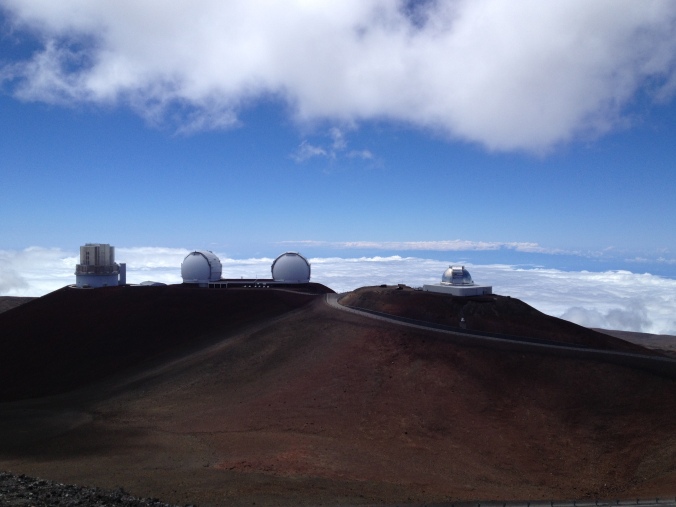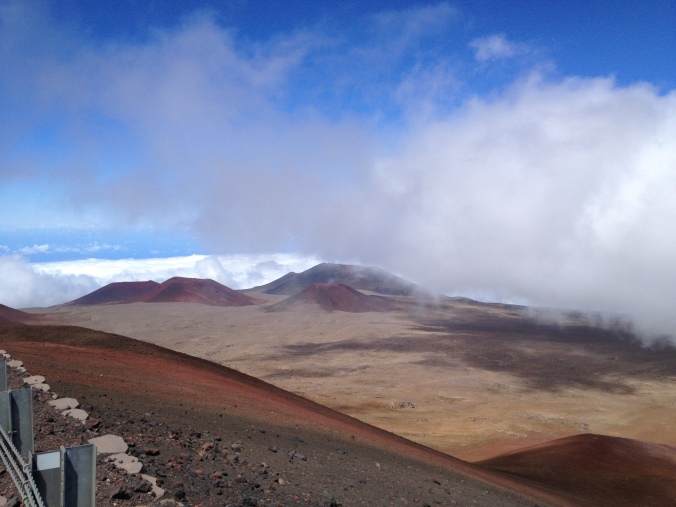There are few places in the world where you can drive from sea level to almost 14,000 feet in a matter of a few hours, but this is what we did to visit the Mauna Kea Observatories on the Big Island of Hawaii.
The summit of Mauna Kea stands at 13,800 feet. Mount Cameroon, which is the tallest mountain in West Africa, is 13,255 feet tall by contrast. Building the observatories at the top of Mauna Kea was a pretty controversial move. The mountain is a very sacred place in the Hawaiian tradition and there was a lot of opposition to scientists coming in and using the land. The thing is that Mauna Kea also currently has the best seeing in the northern hemisphere, with its height and location in the Pacific Basin. It is because of the observatories that are up there now that humans have been able to see planets orbiting other stars.
My dad is into these sorts of things – observatories and telescopes. In fact, he makes his living making some of the chips and sensors that make them work. So he is the one that called up the observatories to organize a tour for his family to go see the Gemini North Telescope. He was asked if he was interested in an educational or professional tour – apparently they are trying to discourage tourists from going up there. A professional tour it was.
The next barrier to getting to the Mauna Kea Observatories is that driving up there violates your contract with all but one rental car company on the island. So we rented a 4 wheel drive vehicle for the day and started on our way up. During the drive the landscape went from old lava flows to grassy hills to shrub land, until the plant life was pretty much nonexistent and it looked like we were on another planet.
Once we were up there, we faced another challenge: the altitude. We had all spent an hour at about 9,000 feet where there was a small visitors’ center and where we met our guide, Janice, and had lunch together in the cafeteria where the scientists eat. She told us that the altitude affects people in unpredictable ways: that she had taken triathletes to the top that ended up fainting from the thin air, as well as 400 pound native Hawaiians who were perfectly fine. She and my dad disagreed on whether it was a good idea to have the all-you-can-eat ice cream that was included in the lunch. My dad claimed that eating too much would make all of our blood rush to our stomachs, leaving less to get oxygen to our brains. Janice said that she thought the slight increase in blood sugar actually helped. We all (including my dad) opted for a modest amount of ice cream. In the end there was no fainting on our trip up. I would occasionally start to feel lightheaded, and was certainly concentrating on my breathing much more than usual, but none of us got too weird.
And the views were otherworldly.


